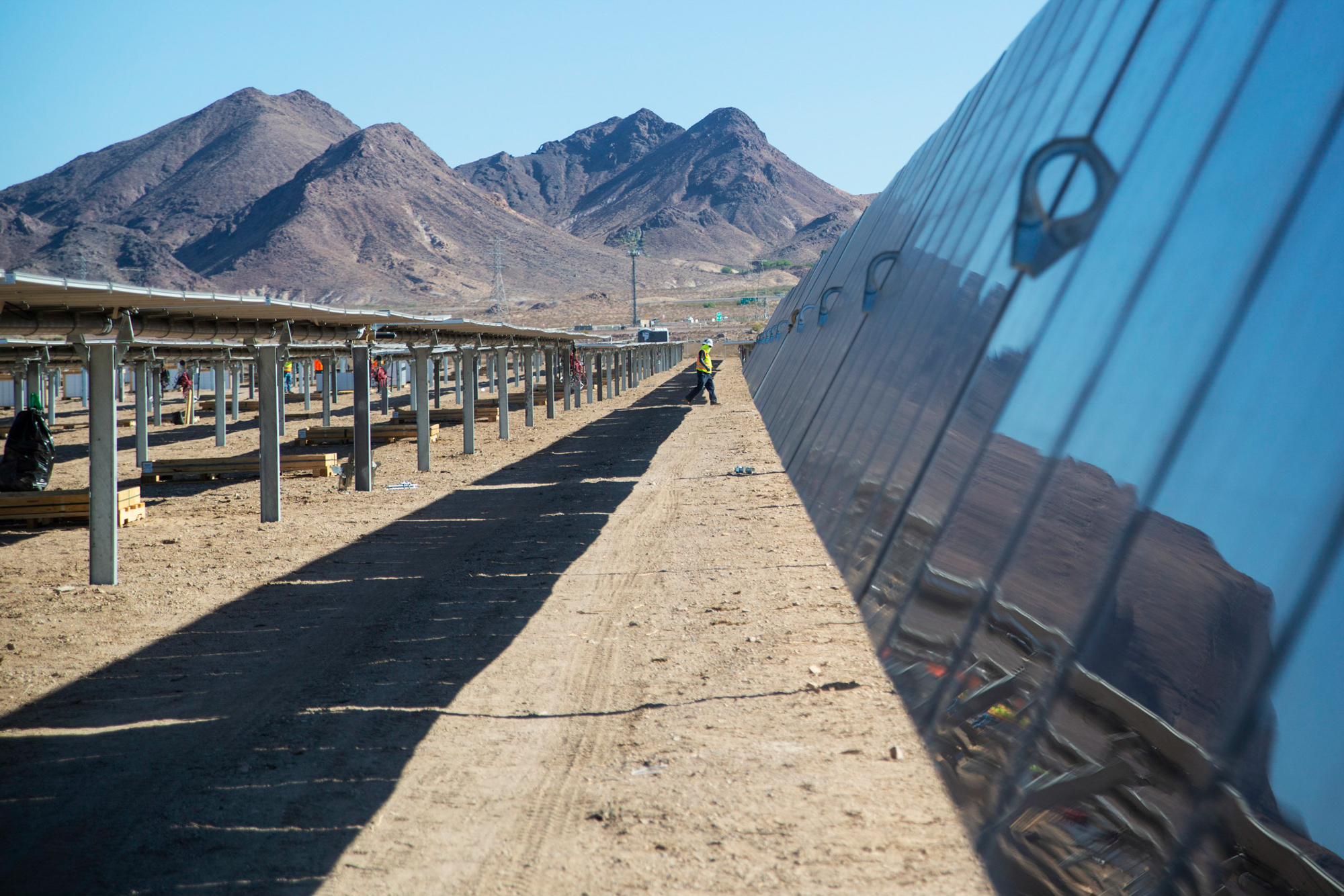A diversified and balanced approach to energy is working for Nevada

Affordable, safe and reliable energy is the backbone of our state’s economy. It not only provides essential services to Nevadans but also serves as a magnet for new businesses, new industries and new jobs.
For this reason, in early 2023, Gov. Joe Lombardo outlined a comprehensive and balanced energy policy for Nevada that embraces a wide range of fuels, technologies and supporting infrastructure.
The overreaching goal is to develop and maintain a robust, diverse energy supply portfolio that ensures Nevada's energy needs are met. And our state is making significant progress toward this objective on multiple fronts.
Let’s start with solar energy. When compared to other states, Nevada ranks sixth in the nation in terms of total solar generation capacity. Solar technology currently provides 23 percent of the state’s electricity and that number continues to climb.
Nevada’s abundant solar resources and pro-business climate continue to attract investments such as Project Gemini, a $1.2 billion, 690-megawatt solar facility located just 30 minutes northeast of Las Vegas. When complete, Project Gemini will generate enough electricity to power 260,000 homes and will have the ability to store surplus daytime energy for nighttime use.
Next, there’s geothermal energy. Many of the same technologies used to drill for oil and natural gas can also be used to tap into underground sources of heat. Nevada is a national leader in this field, generating almost 25 percent of the country’s geothermal electricity already.
Wind farms have not taken off in Nevada as other renewable sources of electricity, but that’s changing. The state’s second wind farm — Stagecoach Wind — has been proposed for White Pine County in Northern Nevada and is currently in the permitting process. The developers of the project are planning enough wind turbines to generate 600 megawatts of electricity, or enough to power around 145,000 households.
Natural gas-fired power plants are currently Nevada’s largest source of electricity. These plants provide critical support for renewable sources such as wind and solar, whose output changes based on weather conditions.
However, natural gas plants can also be dialed back as other sources of energy grow, and that is exactly what’s happening. According to the U.S. Energy Information Administration, natural gas fired power plants account for 56 percent of the state’s electricity generation, the smallest share in 17 years.
Thanks to Hoover Dam, Nevada is famous for hydroelectricity, of course. But we’re also writing a new chapter for this technology in Nevada as an energy storage solution.
When surplus renewable electricity is used to pump water uphill into a hydroelectric dam, that renewable energy is effectively stored for later use.
In White Pine County, rPlus Hydro is planning to build a 1,000 megawatt pumped hydro energy storage project estimated to be worth $2.5 billion. For scale, rPlus has estimated this single energy storage facility could provide roughly 13 percent of Nevada’s electricity needs for eight hours at a time.
Nevada is also moving ahead with smaller-scale battery storage facilities. They include a 380-megawatt battery connected to the Project Gemini solar installation and a 220-megawatt battery project to be developed in partnership between utility company NV Energy and storage firm Energy Vault.
The state’s energy strategy also includes a role for hydrogen — a highly versatile fuel that can be used across the transportation, electricity and industrial sectors.
In North Las Vegas, Air Liquide recently opened a $250 million production facility where it will process landfill gas into 30 tons of liquid hydrogen per day — enough to power 40,000 hydrogen fuel cell vehicles. The North Las Vegas hydrogen plant will be the largest such facility operated by Air Liquide in the world, which is saying something when you consider that Air Liquide does business in more than 70 countries.
A balanced energy portfolio doesn’t stop with fuels, either. From manufacturing to mining, the engineers and scientists who are building new domestic supply chains for the energy sector are here in Nevada.
One of the best examples is the Tesla Gigafactory, located just an hour from Lake Tahoe; it is one of the biggest plants for electric vehicles and batteries in the world. After a $3.6 billion expansion, Gigafactory Nevada will also build electric semitrucks.
This expansion aligns with another component of the state’s energy policy: the Nevada Clean Trucks and Buses Incentive Program. This program was signed into law earlier this year to help small businesses and school districts overcome some of the upfront costs of introducing electric vehicles into their truck and bus fleets so they can benefit sooner from the fuel and maintenance cost savings.
In terms of energy supply chains, Nevada is also a national leader in producing the materials needed to make electric vehicle batteries. Our state is currently home to the country’s only operating lithium mine and there is very strong private sector interest in producing more lithium in Nevada.
When dealing with energy policy, it can be tempting to focus on just a handful of energy sources and pretend that they can meet all of our needs. But in reality, it takes a diversified and balanced approach to deliver the energy, investment and jobs that Nevadans need and deserve.
Dwayne McClinton is the director of the Governor’s Office of Energy.
The Nevada Independent welcomes informed, cogent rebuttals to opinion pieces such as this. Send them to [email protected].
